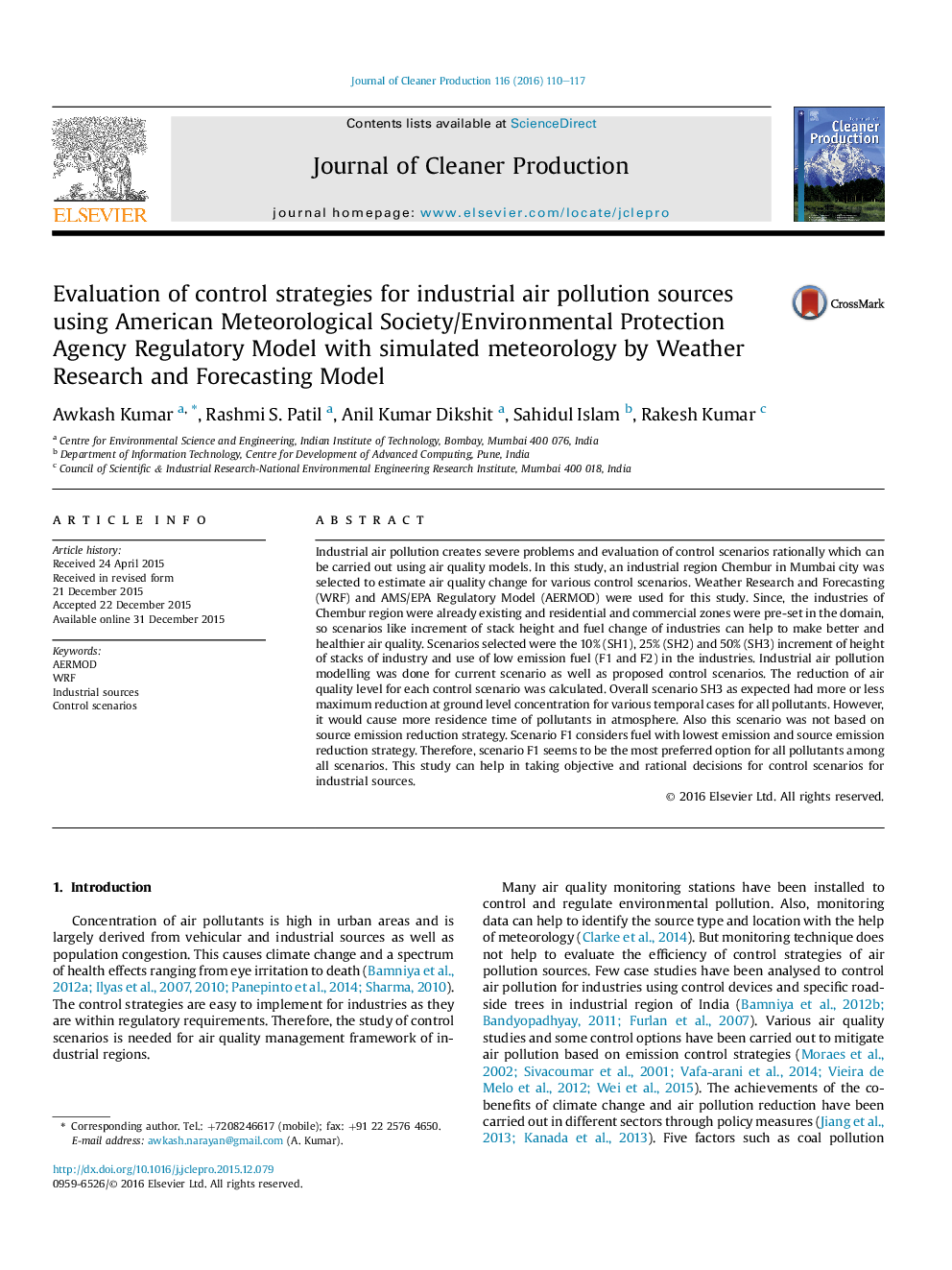| کد مقاله | کد نشریه | سال انتشار | مقاله انگلیسی | نسخه تمام متن |
|---|---|---|---|---|
| 1744189 | 1522133 | 2016 | 8 صفحه PDF | دانلود رایگان |
• WRF Model has been used to generate onsite meteorological data.
• Various scenarios were tested for industrial air pollution sources.
• After 50% of stack height, the rate of decrement of concentration is low.
Industrial air pollution creates severe problems and evaluation of control scenarios rationally which can be carried out using air quality models. In this study, an industrial region Chembur in Mumbai city was selected to estimate air quality change for various control scenarios. Weather Research and Forecasting (WRF) and AMS/EPA Regulatory Model (AERMOD) were used for this study. Since, the industries of Chembur region were already existing and residential and commercial zones were pre-set in the domain, so scenarios like increment of stack height and fuel change of industries can help to make better and healthier air quality. Scenarios selected were the 10% (SH1), 25% (SH2) and 50% (SH3) increment of height of stacks of industry and use of low emission fuel (F1 and F2) in the industries. Industrial air pollution modelling was done for current scenario as well as proposed control scenarios. The reduction of air quality level for each control scenario was calculated. Overall scenario SH3 as expected had more or less maximum reduction at ground level concentration for various temporal cases for all pollutants. However, it would cause more residence time of pollutants in atmosphere. Also this scenario was not based on source emission reduction strategy. Scenario F1 considers fuel with lowest emission and source emission reduction strategy. Therefore, scenario F1 seems to be the most preferred option for all pollutants among all scenarios. This study can help in taking objective and rational decisions for control scenarios for industrial sources.
Journal: Journal of Cleaner Production - Volume 116, 10 March 2016, Pages 110–117
